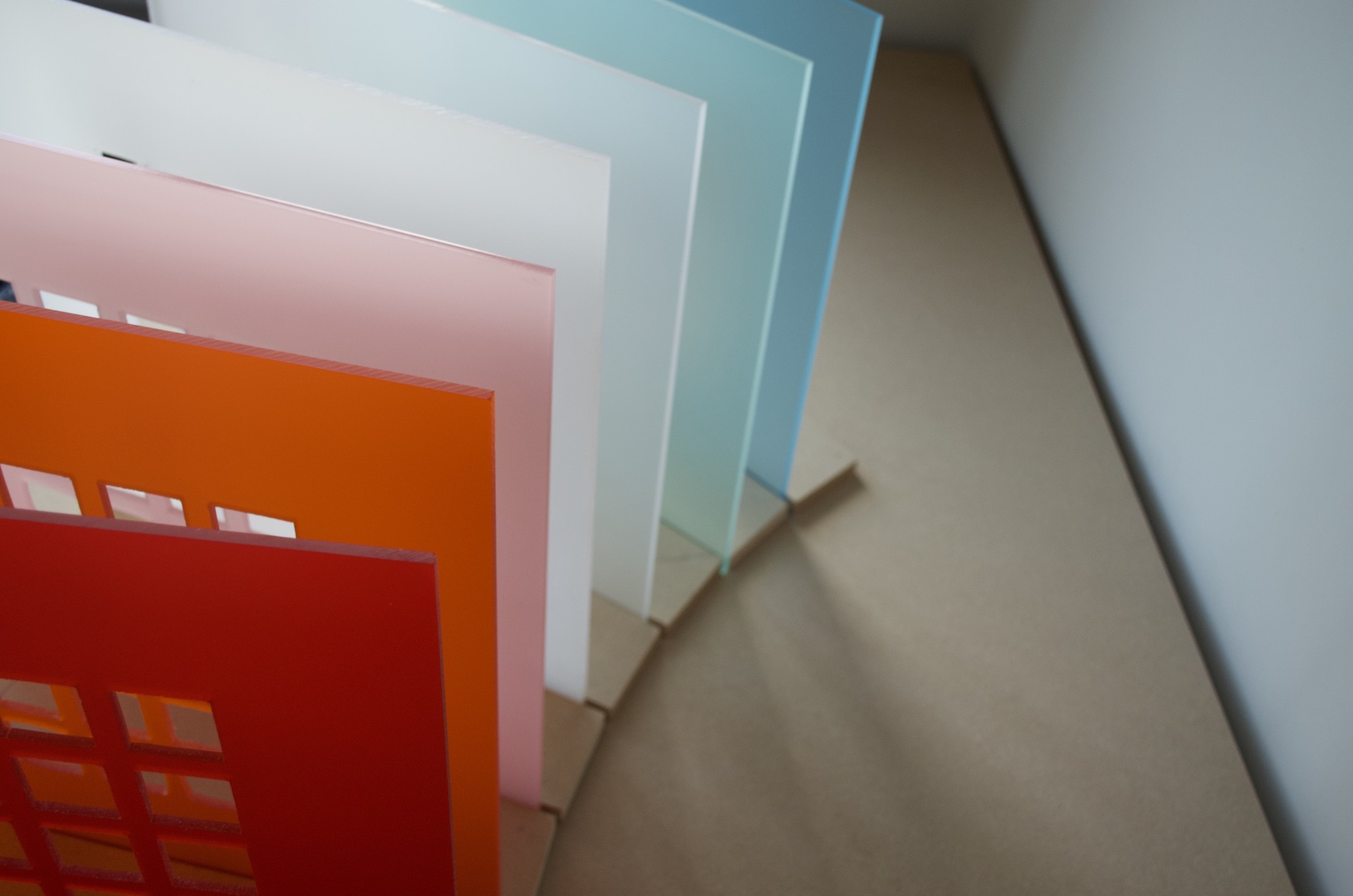Final year project
600 to Life [Read more]

600 to Life
600 to Life is the result of my studio practice this semester. My project this year has largely centred around the idea of creation; not only through the creation of the pieces but the idea that the individual viewer can create their own happiness and take control of whatever circumstance they face. My placement year left me with an overwhelming sense of future monotonous doom. I, therefore, centred my work around a journey of self-discovery and the process of choosing your own future and mindset. The title 600 to Life comments on the 600 hours of mandatory work for the module being the start of the working life that we, as students know are faced with imminently.


600 to Life
The abstraction of concept through the grid is translated in the negative space cut from within the acrylic pieces in the sculpture. The transition of the panels from a grid comprising of squares to circles reflects the change from the monotonous rigidity of the working individual revolting and transforming into something other, with greater purpose and freedom. The internal transition of the panels as you move around the sculpture prompts the discovery of the path to change, to freedom and to the self-awareness of the penultimate panel of circles. The circle is a strong eternal shape with endless destination and possibilities. Whilst still in the grid formation, the circular ending to the piece prompts the individual to go forth and make their own path.


600 to Life
The creation of the pieces has been a process of self-reflection themselves. The process of work is reflected in the pieces; the negative cut-out grids are all carved by hand displaying the resolution of 600 hours of work, trailing and testing different theories and processes. This has resulted in the development of a form of minimalist drawing, not on paper, but into a solid material, creating negative space with limited visual information. The negative space is an important commentary of the process and is an important visual cue of the transition of the grid as a whole process rather than individual pieces of work placed together. Space, form and skill, therefore, combine in the practice, theory and structure of the piece, 600 to Life.


600 to Life
Kathryn Levy
Hello, my name is Kathryn Levy, I am a Fine Art Undergraduate and my enthusiasm to engage communities with Arts fuels my creative practice.
My work is heavily influenced by my interest in making arts access equitable throughout England. In my final year, I aimed to research the benefits of arts and craft for the purposes of health and social care both structurally and individually. This prompted my dissertation, evaluating the benefits of craft for the purposes of health and wellbeing within societal structures such as government initiatives and funding for communities within England. Within my practice, I aimed to look introspectively at the individual process of change through the medium of creativity, exploring themes of play, self-discovery and enlightenment through art and materials. I believe that creativity in any capacity has the power to create better communities, networks and lives. I, therefore, wish to work on creating a more accessible and fair society whether that be through charity, museums, government or otherwise, I will constantly strive to make arts, a staple of health and social wellbeing throughout England.
Final year project
600 to Life
Work Experience
The Hepworth Wakefield.
During my time at The Hepworth Wakefield, I had the privilege of working with both the Curatorial Department and the Learning Team.
Whilst working with the Curatorial team, I assisted on the exhibition 'Alan Davie & David Hockney: Early Works' working on the install and deinstall of the exhibition and working with The Hepworth Wakefield's own collection and exhibitions. I had an array of roles whilst working with the curators. I was able to help with the condition reports, object handing, shipping, label writing, website content and research and so much more. My time with the curatorial team made me appreciate the effort and beauty of the work that goes into a functioning gallery. It also gave me a new appreciation and made me look further at the way I work and how I have faced the trials of the degree show preparation this year.
Alongside the Curatorial Department, I also worked for the Learning Team. The Learning department ensures that the gallery provides services for the community and enriches the culture of the districts surrounding the gallery. The workshops and events had a positive impact on people from all walks of life and gave me an amazing insight into what an establishment of art can do to enrich the lives of communities. Whilst working with the team, I helped plan, research, prep resources and assist the running of workshops such as Burberry Inspire, ARTiculation and the Hepworth's own freelance artist-lead programmes such as Toddler Tuesdays and Dementia Cafe.
Ashby Grammar School.
Throughout my placement at Ashby Grammar School, I assisted the Art department; providing support in lessons, prepping the classroom, helping individual students, and providing support for substitute staff to provide continuity of lessons for children in the years 9-13. Each lesson had different challenges that made the need for a personal connection to teaching staff essential. The job was challenging yet rewarding and during my time at the school, it became apparent that the school system favoured results over creative output. I, therefore, aimed to create a workshop to allow the students to express themselves artistically for the purpose of enjoyment rather than to meet targets. Unfortunately, this was not finished due to restraints of the Coronavirus Pandemic. I wish to take this motivation of creative expression rather than statistics to work to generate a healthier and happier space for students.